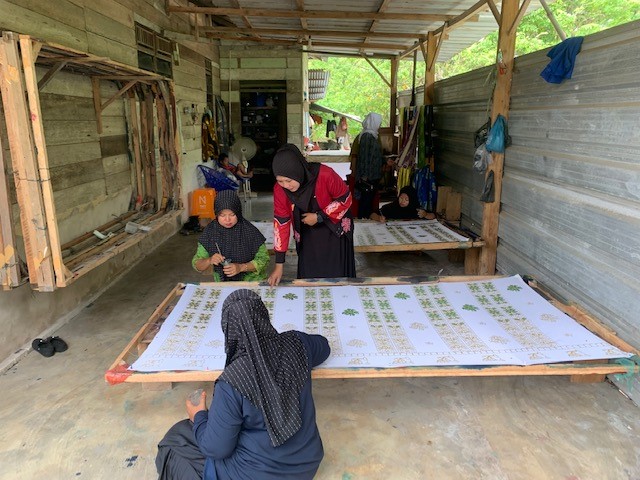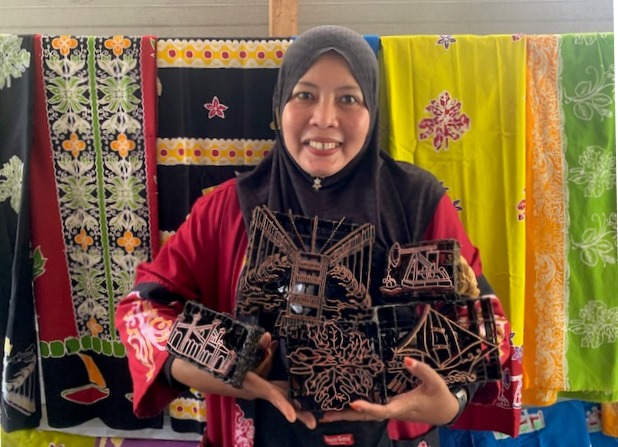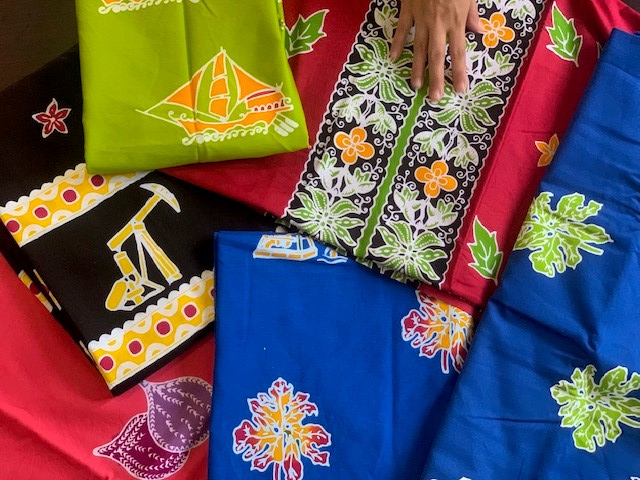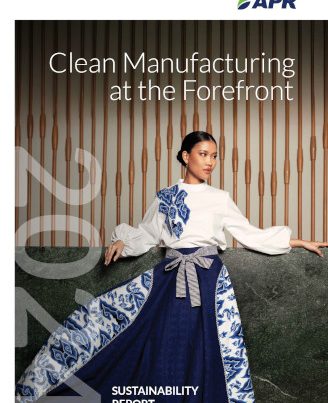
With the help of Asia Pacific Rayon (APR), the Batik Seruni group in Siak district, Riau province, Indonesia, has become and grown as a micro, small, and medium enterprise (MSME). This article talks about the importance of Batik Wastra, the complicated process of making it, Batik Seruni’s journey, and how important it is to keep Indonesia’s cultural history alive.
The Art of Batik Wastra
Batik Wastra is a traditional fabric known for its intricate designs and patterns. The word “batik” refers to the process of putting wax on fabric to stop areas from being dyed, making unique and beautiful designs. The word “wastra” means “fabric” or “textile” in Indonesian. This art form has many cultural meanings and shows how skilled and creative Indonesian artists are.
The work-intensive process
To make Batik Wastra, you must go through a few steps requiring skill and attention to detail. Designing, putting on wax, dying, taking off wax, and finishing are all parts of the process. Skilled artisans work hard at each step to ensure beautiful fabrics are made. The process is done by hand instead of machine, giving it a level of artistry, craftsmanship, and uniqueness that can’t be duplicated.
Batik Seruni: A Flourishing Batik Group
 With the help of APR, Khumaesah’s Batik Seruni has grown into a well-known batik group. Batik Seruni hit the market in 2018. It is in the Siak district, which is only 50 kilometres from APR’s operations. First, they put out six hand-made pieces, which were very popular and sold out very quickly. This success made Khumaesah want to grow her business to meet the needs of a growing market.
With the help of APR, Khumaesah’s Batik Seruni has grown into a well-known batik group. Batik Seruni hit the market in 2018. It is in the Siak district, which is only 50 kilometres from APR’s operations. First, they put out six hand-made pieces, which were very popular and sold out very quickly. This success made Khumaesah want to grow her business to meet the needs of a growing market.
Unique Motifs and Local Wisdom
The patterns that Batik Seruni makes have a lot to do with the local knowledge of Dayun village. The Watermelon Leaves pattern is one of their best-selling items, showing how lively the local culture is. Also, the “nodding donkey pump” (Pompa Angguk) design has much meaning in the community. People like and respect Batik Seruni because they work hard to include local culture in their designs.
Getting noticed and growing
Both the local government and the community were interested in Batik Seruni. The fabric, which costs between IDR 300,000 and 600,000 per sheet, is used to make the uniforms of village officials, which shows its unique qualities and cultural importance. The local government has proudly shown off Batik Seruni at shows in other provinces and nearby countries. This has helped the group’s reputation and made more people realise how important it is to protect Indonesian cultural heritage.
Getting Past Problems
Khumesah ran into many problems while developing Batik Seruni, especially convincing young people to work in the industry. Currently, only five temporary batik makers are left at the batik house. Khumaesah says that more support and encouragement is needed to keep wastra alive and bring in more young people from the area.
APR’s intensive training to preserve cultural history
Batik Seruni shows the larger goal of protecting Indonesia’s cultural heritage. APR and the Riau Indonesian Textile Association (API) work together very well to get people excited about textile development in the area. APR and API work together to help nine batik groups, including Batik Seruni, in providing monthly training on colour design, digital marketing, developing MSMEs, and making motifs.
APR’s Commitment to Inclusive Growth
 APR’s plan to help traditional textile craftsmen fits with its long-term goal of growth that benefits everyone. The company wants to set up a regional textile centre and help the people in the area make more money. By giving women and young people in Riau access to training and opportunities to improve their skills, APR gives them more power and, in the end, helps the batik industry stay alive and stay competitive.
APR’s plan to help traditional textile craftsmen fits with its long-term goal of growth that benefits everyone. The company wants to set up a regional textile centre and help the people in the area make more money. By giving women and young people in Riau access to training and opportunities to improve their skills, APR gives them more power and, in the end, helps the batik industry stay alive and stay competitive.
Batik Seruni shows how beautiful and important Batik Wastra is to its culture. This batik group has become a successful MSME because of its unique designs and commitment to keeping local knowledge alive. The relationship between APR, API, and the community is very important to the growthistry. By recognising and protecting Indonesia’s cultural heritage, we can ensure this ageless art form will be around for future generations.






